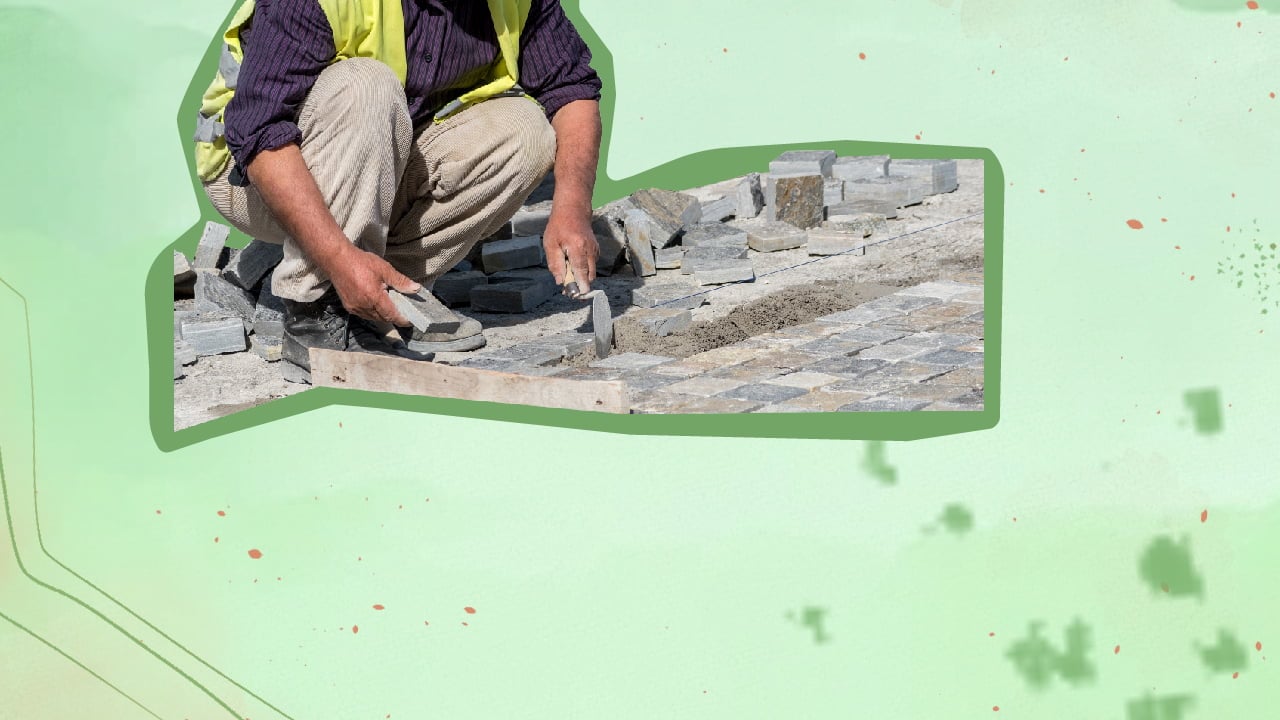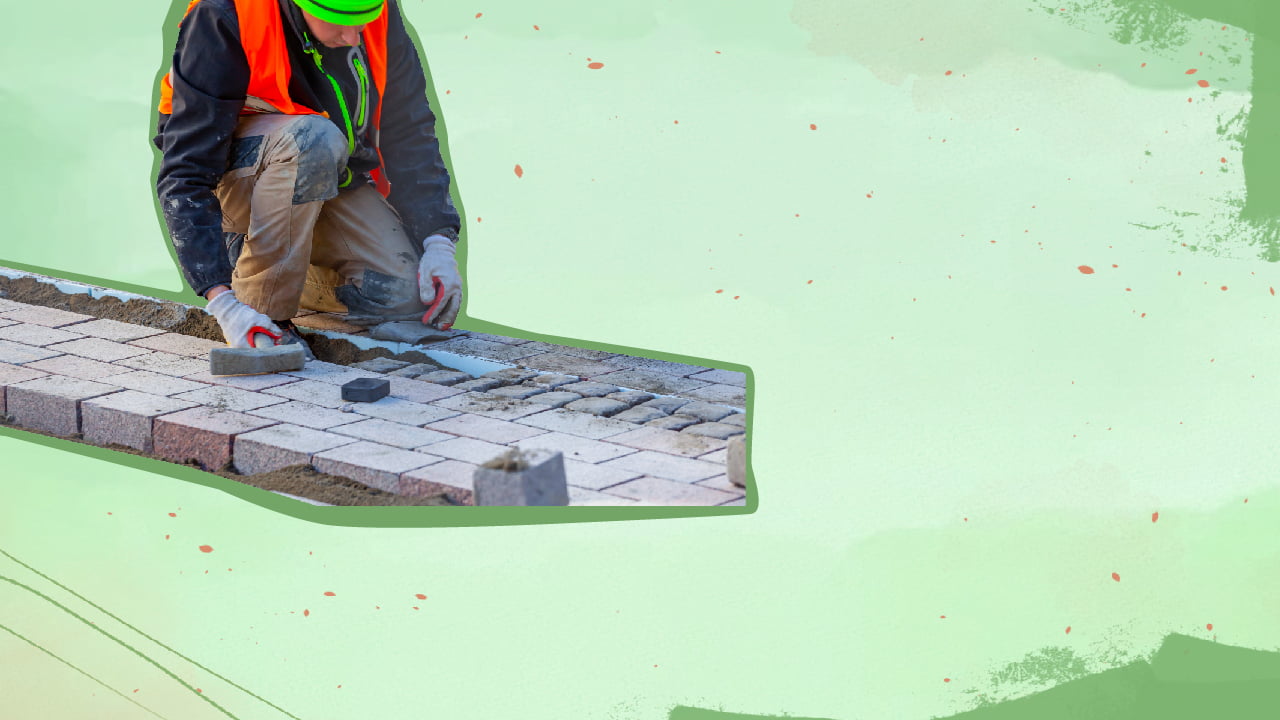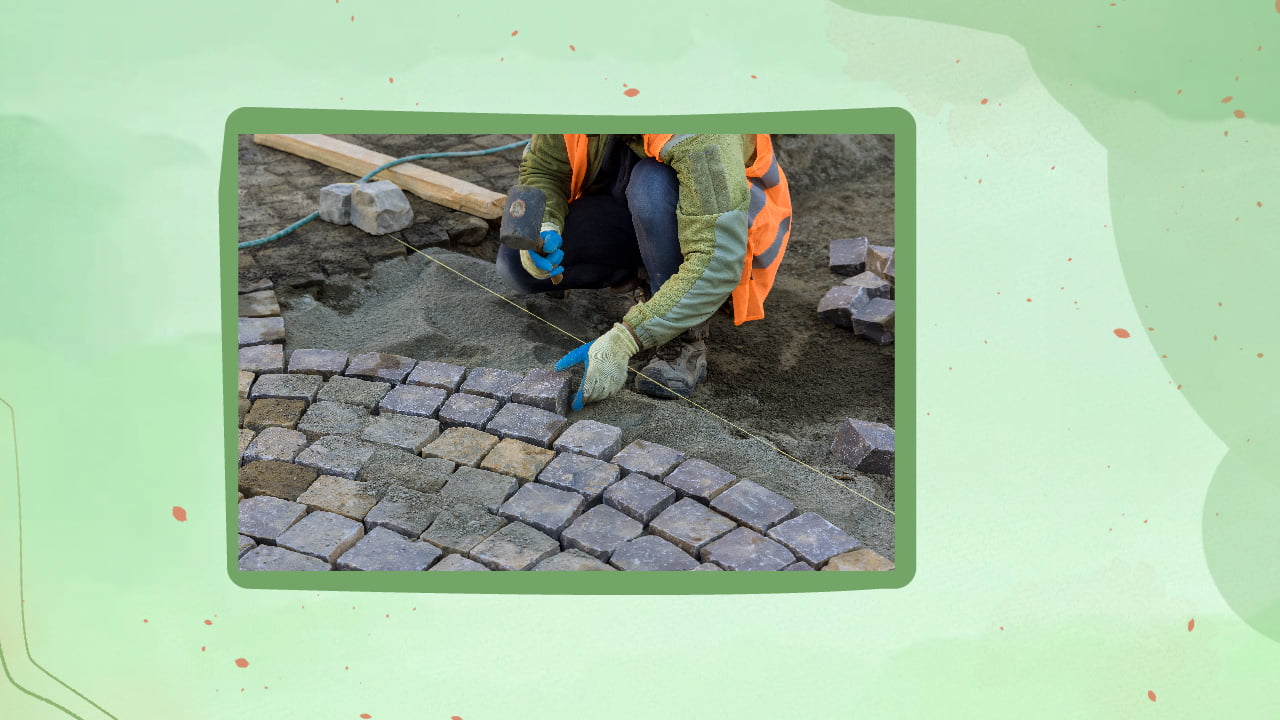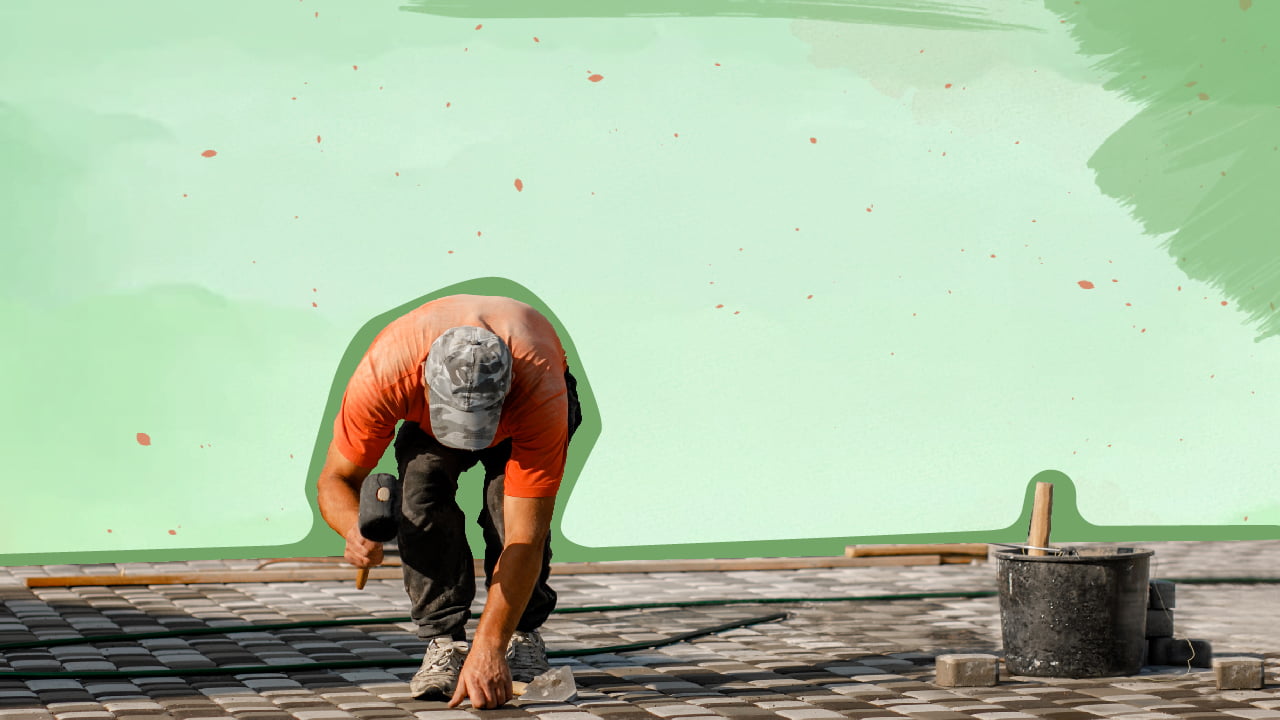Polymeric sand is a specialized construction material typically used for landscaping projects like sealing pavers and driveways. It can also be a long-term solution for repairing cracks on these surfaces.

Damaged pavements and driveways are more than just an eyesore- they can compromise the safety of your landscape like nothing else. That’s why most homeowners take special care when sealing these surfaces or repairing them in case of damage. And if you ask me, polymeric sand is one such material that can help you achieve both purposes effectively.
But, what is it and how do you use it? Read on to find out!
What Is Polymeric Sand After All?

Simply put, polymeric sand is a special material used for construction purposes, which is made by combining fine sand particles with additives (like silica). Polymeric sand is used by professionals and DIYers alike to fill the gaps between surfaces like tiles and pavers. Once exposed to water, the material hardens over time, creating a strong, durable bond.
Now, regular building sand, the material used for the formation of paver beds, can be used for filling gaps and joints between the above-mentioned surfaces. But there are quite a few advantages that make polymer sand stand out when compared with regular sand, such as:
1. High Durability
The additives in a polymeric sand bind with the material when exposed to water, creating a fundamentally durable bond. So, when you apply the material to fill gaps or joints, you can rest assured about its longevity to keep the surface secure. However, this is not the case with regular building sand, as you may have to reapply it every few weeks, especially with heavy use and inclement weather conditions.
But polymeric sand is said to be resistant to rain, the elements, and even corrosion. In hindsight, it reduces the need for frequent repair and reconstruction of your driveway, pavement, or other tiled surfaces.
2. Ease Of Use
No matter which brand of polymeric sand you opt for, it will come with detailed instructions on the package for hassle-free application. Although the process may be time-consuming, especially for first-timers, it’s relatively easier to get the hang of.
Tip
Make sure you follow the application instructions to the tee, especially if you want to apply polymeric sand to make the surface resistant to water. Moreover, you should clean the remaining polymeric sand thoroughly to ensure that everything “sits” in the gaps or joints and there’s no leftover on the surface.
3. No Weed Infestation
Since polymeric sand settles in the joints and gaps of pavers and tiles without leaving any gaps, you don’t have to worry about weed infestation in these places. This also means that you won’t have to use any weed killer or use manual weed-pulling methods, thereby preventing any unnecessary damage to the surface.
4. Multiple Colors
Polymeric sand is manufactured in different colors, with red, brown, and gray being the most popular options that blend with most pavers and tiles seamlessly. As a result, homeowners don’t have to worry about spoiling the aesthetics of their outdoor projects.
Are There Any Disadvantages Of Using Polymeric Sand?
Like any other construction material, using polymeric sand requires users to be careful about certain aspects. For instance, this material can harden very quickly, meaning you won’t have much time to work with it, especially once it’s exposed to moisture. Hence, you have to work quickly during the application; otherwise, there will be chunks of sand all over the surface and joints.
Another thing to be aware of is if there’s leftover sand on the surface when it rains or if the surface the sand is being applied to is moist, the material will harden immediately. And this will result in ugly-looking patches.
Furthermore, you should always use the right amount of sand and sprinkle the right amount of water to fill the gaps and joints. If you use too much water, the polymers in the sand will wash away before getting the time to set. Likewise, using less water will result in weaker bonds, which will be fragile and highly likely to break away.
How To Use Polymeric Sand?

The most common use of polymeric sand is in landscape paving projects, such as stone, brick, and concrete pavers. Aside from that, you can use this material to fill cracks on tiles and similar surfaces. But how do you use polymeric sand to get the best results? Find out below!
Start by cleaning the surface to ensure that there’s no dirt or debris which can interfere with the bonding process. And once you’ve ensured that the surface is completely dry, spread small amounts of the sand on the required areas. Do not use too much, as the leftover sand will become hard to clean- you can always add more if required.
Now, use a push broom to sweep the sand and “force” it into the cracks and joints. Do this a couple of times in one direction, then sweep in the opposite direction to ensure that all the gaps have been properly filled. Continue this step until all the gaps have been visibility filled with the sand.
To reinforce this step, I’d suggest using the handle of the broom or using a vibratory compactor to tap the sand and help it settle. You will likely see that the level of the sand in the gaps will drop, which is when you should apply more sand and repeat the application process. Continue this until the cracks are filled to the brim after the tapping.
In case of excess polymeric sand on the surface, use a leaf blower or a brush to clean it, but make sure you’re not removing the sand from the cracks or joints. Finally, use a mister to spray water on the applied sand and activate the binders. However, remember that too much water or a strong water stream will wash away the applied sand.
How Long Does Polymeric Sand Take To Dry?
Once exposed to water, the applied polymeric sand should dry within a couple of days. You can check the bond by inserting a stick or pen into the joints- if it fails to penetrate the crack, the sand is completely set. If not, you can use more water or apply more sand as required and repeat the application process.
But “should you seal the pavers before using polymeric sand?” Well, this isn’t really required, as the material itself will work as a sealer to lock the paver joints in place. However, read the manufacturer’s instructions carefully, as some manufacturers may recommend otherwise.
Although there’s no rule to stop you from doing so, using polymeric sand to fill concrete slabs may not be the best idea. This is because the material will eventually harden over time, preventing flexibility in the slabs and promoting cracks in the long run. As such, I’d suggest using backer rods, which are specifically made for sealing cement pavers. You can even take the help of a professional if you’re unsure about the process. Filling gaps and joints with polymeric sand that already has gravel in them can be extremely cumbersome, as it will take a lot of effort to force the sand between the gaps. And leaving the sand on the surface for too long will increase the risk of discoloration. Ideally, you should try removing all the gravel from the joints, cleaning and drying the joints, and applying polymeric cement. Once applied, finish it with a layer of polymeric sand before spraying water to activate the polymer. No, polymeric sand should never be used to fill joints and cracks in flagstone pavers, as they are typically built on a foundation of gravel stones. As a result, the sand will not reach the lower level of the paver and simply settle on top, eventually cracking and creating a mess. Not only that, but the void left at the bottom of the flagstone pavers can facilitate the growth of weeds and promote the entry of ants or other small pests. Yes, polymeric sand can perform very well when sealing porcelain tiles and pavers. As the material sets in place and bonds with the tiles, it facilitates a durable connection that’s equally flexible to reduce the chances of cracks and other foundational damages. Yes, many professionals prefer joining clay brick pavers and fixing cracks on brick driveways with polymeric sand. As the material hardens inside the gap forming one continuous unit, it strengthens the bricks to prevent cracks. Moreover, it takes up all the space inside joints and cracks to deter weeds and pests. Additives like resin and plastic in the polymeric sand can also protect the surface integrity of your pavers and driveway by facilitating even weight distribution. Bluestone concrete pavers are generally designed in a wet-laid application, which isn’t really suitable for polymeric sand. If you use polymeric sand to fill gaps and cracks in wet bluestone pavers, the material will invariably harden to form ugly chunks, eventually cracking. Besides, the joints may not hold in freezing and thawing conditions. Due to these reasons, many professional contractors prefer using mortar instead of polymeric sand when setting or repairing bluestone pavers. The answer to this will depend on the size of the pea gravels you have used. For instance, if you have placed the pavers 2 inches apart and used small to medium-sized pea gravels for the base, there should be enough space for the sand to enter and do its job. However, using polymeric sand may not be useful if you’re using large-sized pea gravels at the base or using them on the surface. Polymeric sand works very well when setting or fixing gaps and cracks in travertine (natural stone) pavers. All you have to do is pour the sand in small heaps on the required areas and sweep it in the gaps a couple of times to ensure they are completely filled. Then, clean the leftover sand on the paver and lightly mist the filled gaps to activate the additives, setting the sand in place. What Is Polymeric Sand & What Is It Used For FAQs

What Is Polymeric Sand & What Is It Used For Final Words
That’s all I had for today!
But before I leave you to the job, here’s one last tip. If your pavers have been discolored due to leftover polymeric sand, spray some white vinegar on the required area, leave it for a couple of hours, and scrub it lightly. Then, wash it with soap and water and let the area dry completely.
See you another day!.
